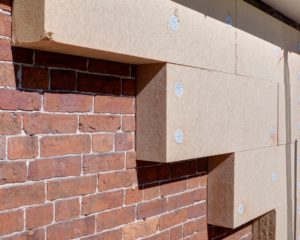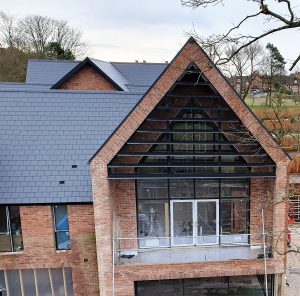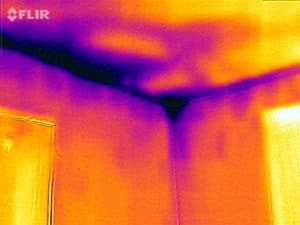PassivHaus Retrofit is an exciting new standard that focuses on renovating older homes, helping them to reach their full energy-efficiency potential.
Here at Buildpass, we love to shout about the eco-friendly PassivHaus (Passive House) builds that are coming onto the construction scene, but what about our old builds? It’s important for the industry to bring their focus towards retrofitting buildings. This is where the EnerPHit standard: Passivehaus retrofit comes into play.
What is a passivhaus retrofit? The passivhaus retrofit involves the renovation of older homes, helping to reach the passivHaus standards. When achieved, this will allow even the oldest of homes to successfully achieve energy-efficiency and reduced energy usage.
Of course, It’s never as easy as we hope; there are some challenges that come alongside the new standard, but we promise, the payoff is huge and 100% worth it. In this blog, we will run through how passivHaus retrofit could be a massive benefit to your developments.
Can you retrofit Passivhaus?
Typically, the PassivHaus standard is for the creation of newer builds, however the new EnerPHit standard has been created to refurbish older homes across the globe. If you own an older home, you can retrofit passivhaus by refurbishing your home to fit the standards of the PassivHaus standard.
Every home is different which means efficiency measures that work for one home project may not be the best route to take for another. If wrong, you could end up with damp, rot and end up with a hefty bill. To avoid these errors, making sure to get the right contractor with the right skills and experience is super important (something that we can help you with at Buildpass!). Did you know we are qualified to support and certify the Passivhaus retrofit/EnerPHit? If you are interested in finding out more about the Passivhaus retrofit standard and how it could help your build, give us a call.
What is the Passivhaus standard?
It is well known that the PassivHaus standard is world-leading when it comes to energy efficient construction. The PassivHaus is the real deal; It’s the mecca of all energy and sustainability consultants. So, you now understand how important the passive house standard is in the world of construction, but what exactly is it and what impact has it had on the industry?
The standard was developed by PassivHaus Institut in Germany and can only be certified through a rigorous quality assurance process. Long story short, a passivHaus is for new builds and is designed to consume up to 90% less heating and energy than conventional buildings, keeping its occupants warm in the winter and cool throughout the summer months.
Many companies are starting to create their own PassivHaus builds and quickly becoming the inspiration for construction companies across the globe. For example, one of the most recent PassivHaus builds to come into the spotlight is the Canary Wharf student accommodation by Apt. It is predicted to become the biggest PassivHaus built in Europe. Pretty impressive if you ask us.
RELATED: 5 EXAMPLES OF SUSTAINABLE CONSTRUCTION
How much does it cost to retrofit Passive House?
The cost of an EnerPHit retrofit will vary due to many different considerations such as size and the condition. For example, an old uncared-for house will need much more work to be able to reach maximum thermal performance compared to a modern home that only requires a few upgrades.
Some estimate that you can expect to pay around 30% of your home’s value for the complete EnerPhit Passive House retrofit, but again, this will range for each project. These are some of the costs that can come into play:
- Floor Insulation
- Shading
- Wall and Roof Structures
- Airtightness
- Heating and Hot Water
- Ventilation Commissioning
- PassivHaus Certification
This might seem daunting at first, but actually, there’s now a number of PassivHaus projects that have been constructed for the same price or cheaper than conventional buildings. Interesting… We will touch more on this later.
What are the benefits of a Passivhaus retrofit?
It’s winter. You wake up in the morning. Dread fills your body as you are struck with a shiver as the cold wintery draft barges it’s way into your warm, cosy home. On top of that, your energy bills are sky high and you’ve just. had. enough. If this sounds like you, your home would most definitely benefit from a Passivhaus retrofit.
There are many challenges to PassivHaus retrofits such as orientation of the building, the foundation and limited space, but there’s many advantages that will help to make occupants happier, healthier and better off in the long run. Advantages include:
Livability
Two of the most immediate benefits occupants will see from renovating an older home with the passive house standard is the improvement in livability. The retrofit helps to bring more comfortable indoor air temperatures, better air circulation and indoor quality. For example, the ventilation systems installed into a passive house building work to provide a constant supply of comfortable fresh air, helping to remove unwanted pollutants and odours from the building. You certainly won’t be dreading those frosty mornings anymore!
Health and Quiet
The PassivHaus buildings provide a healthy and quiet indoor environment to occupants. Now, more than ever, we are spending a significant time of our lives indoors so it’s essential that we make sure that the building we live in has a positive impact on our health and wellbeing. High performance insulation and windows are installed in PassivHaus buildings to make sure they are extremely quiet. Perfect for if you live in a busy urban area!
Sustainability
We won’t say that building one PassivHaus will stop pollution or global warming, of course it won’t. But if a small percentage of the new homes and buildings constructed in the UK and across the globe are built to Passive House standards, there would be significant energy savings.
A study ran in Germany compared the energy consumption of a Passive House with the energy consumption of both conventional and energy-efficient homes. The result found that passive houses had an average energy of 90% compared to conventional homes. We like to think that having some impact is better than no impact.
Savings
Fun fact: There are now a number of PassivHaus projects that have been constructed for the same price or cheaper than conventional buildings. There’s a reason that this standard is so aspirational! To get technical, operating costs and maintenance costs are lower, thanks to the significant energy savings and use of high quality components.
A whole-life cycle cost analysis was carried out by ENCraft and it was confirmed that even if a Passive House build cost 10% more to build, it would still have a lower life cycle cost than the traditional build.
Versatile
In 2017, the International Passive House Conference’s theme was “Passive House for all”. Wherever you are in the world, the Passive House standard is suitable for all building types and climate zones! A large portion of Passive House buildings are residential, but don’t let that steer you away. There are many examples of non-residential Passive House buildings such as schools, office buildings and even swimming pools. There’s no limitations!
Can Buildpass help me with Passive House retrofits?
We are proud to be qualified to support and certify the Passivhaus retrofit/EnerPHit. If you are ready to get started. We are here to help you plan and execute the perfect Passive House retrofit. Just book yourself in for a call with a member of the team today!






















